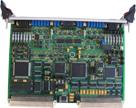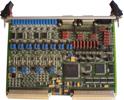Advance Sierra Electrotech Pvt Ltd
Product Range
Fact Sheet
- Location:Karnataka, India
- Year of Establishment:2004
- Business Type:Manufacturer, Business Services
- Main Products:CPU Board, RADAR Video Interface Board
- Reviews & Rating:
Get Verified, Sell more with
- Buyer's trust
- Faster conversions
- Better Rankings
- More
Its Free
Verify NowAT-XMCPMC-SPT CARD
This AT-XMC/PMC-SPT Card is a slave mezzanine module, provides x1 Lane PCI-Express interface or 32 bit PCI interface with the host system.
- FOB PriceNA
- Min Order QuantityNA
- Payment TermsNA
Other Details
This AT-XMC/PMC-SPT Card is a slave mezzanine module, provides x1 Lane PCI-Express interface or 32 bit PCI interface with the host system. It provides interface to host with different types of input and output signals for the avionics domain user interactions. The board has an onboard clock, which is kept in sync to either an external time code input or to time provided by the GPS satellites. Several timing functions are derived from the on-board clock, including a programmable periodic pulse rate output ("Heartbeat"), a programmable start/stop output ("Match"), a selectable frequency output ("Oscillator Out", 1 kHz, 1, 5, or 10 MHz), and a time-stamping input ("Time-Tag”).
The time code can be in, IRIG-B format. The board automatically detects which format is being used. Timing accuracy is the same regardless of format. The time code conveys the day, hour, minute, and second. The on-board 24 MHz oscillator is disciplined to maintain 1 μs accuracy. An IRIG-B time code output is provided, which is in-sync with the incoming time code. Either board may be used as a stand-alone time code generator. Either board may be used as a stand-alone time code generator. The computer programs the day, hour, minute, and second. The board then continues to count from that time, using the onboard oscillator as the time base reference. This is called "free wheeling."
A wide selection of models is available: XMC and PMC, front and rear panel I/O. All modes may be used in either conduction or air cooled systems. To provide I/O and processing expansion capabilities, IO are available on either rear user IO connectors or Front Panel VHDCI Connectors.
Hardware
The AT-XMC/PMC-SPT provides I/O interface though rear XMC user I/O connector J16.An onboard IRIG-B time encoder and decoder allow users to accurately synchronize single or multiple modules to a common time source. The AT-XMC/PMC-SPT has implemented all its Discrete IO logic in the FPGA. All discrete inputs and outputs are accessed through registers implemented inside FPGA.
The source for all the power necessary in the card is drawn from the PMC/XMC connector. The Card needs 3.3V, 5V, +12V,-12V, and 1.5V voltages for its operation. 5V is generated using an on board dc-to-dc converter from 12V input of XMC connector. The 1.5V voltages are generated using adjustable LDO from 3.3V of XMC/PMC connector.
An Octal UART is used to implement the serial port functionality. The Card consists of 8 ports of which 4 ports provide full functionality and other 4 provide half control. When configured for RS232 mode a port provides the full set of data and modem control lines – RTS, CTS, TXD, RXD, DCD, DTR, DSR and RI. It can also be configured in RS485/RS422 mode.An on board GPS receiver provides GPS functionality. GPS receiver is built in to the antenna housing and communicates to the board via (RS-422) interface.
The card comes integrated with powerful software that reduces application development time. All data bus functionality is supported by our advanced API (Application Programming Interface).
SOFTWARE
Drivers & APIs
The cards come with a powerful set of library functions to access the entire SPT functionality. The drivers are designed in a modular fashion consisting of component functions and application functions. The user’s test program can be developed with few calls to the driver by using the set of application functions provided. Driver and high-level API libraries for Windows XP, Windows 7 and Linux are available.
Benefits
- Choice of XMC or PMC backplane
- Powerful protocol engine relieves host
- Mixed protocol saves systems space
Applications
- Rugged deployed systems
- Embedded test systems
- High performance simulators
- Demanding requirements
- Mixed protocol systems
- Avionics upgrades and retrofits
Images






